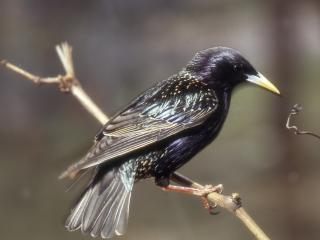The Department of Agriculture and Food is asking people in the Munglinup and Esperance areas to keep an eye out for unusual black birds over the coming months after a starling was trapped in the area.
The two-year old female bird was discovered as part of the department’s seasonal surveillance and trapping program in a lure trap.
This was the first detection of a starling in the Munglinup area since December 2012.
The department has conducted further ground surveillance in the area, resulting in no further birds being detected.
As an additional measure over spring and summer, the department will place audio recording devices throughout the area. The devices are programmed to record for 30 minutes at dawn when the birds are the most active.
The records are then run through a computer program and any suspect bird calls identified. This information then helps guide future ground surveillance operations.
Department invasive species research officer Susan Campbell said starlings were considered one of the world’s worst invasive species.
“Starlings pose a serious threat to agriculture and the environment as they feed on cultivated grain and horticultural crops, foul wool, compete with stock for feed, spread diseases and can displace native birds,” Dr Campbell said.
“It is important for the community to be vigilant and report any usual activity such as birds on the back of livestock or groups of black birds flying in tight groups.
“The department’s ongoing trapping and surveillance program has been very successful in this area over the past three years and we want to continue to work closely with the community on starling control.”
Starlings are small to medium-sized birds with males and females similar in appearance.
They have distinctive glossy black feathers with an iridescent green and purple sheen. From a distance they can look plain black.
Young birds, seen mainly in spring and summer, are a dull mouse-brown colour and when they moult to adult plumage in autumn they have a patchy brown and black appearance, often with some pale spotting.
Starlings are aggressive, social birds and can form very large flocks that move, feed and roost together.
On the ground, they walk jauntily or run rather than hop like many other birds. Other than willy wagtails, starlings are one of the few birds that will stand on the back of livestock.
Any usual bird sightings in the Munglinup and Esperance area should be reported to the department’s Pest and Disease Information Service 1800 084 881.

Media contacts:
Jodie Thomson/Katrina Bowers, media liaison, +61 (0)8 9368 3937/3789
